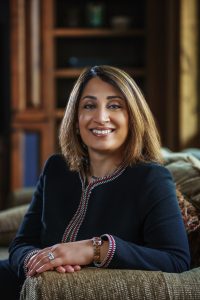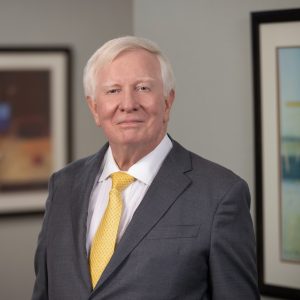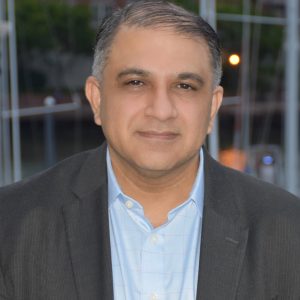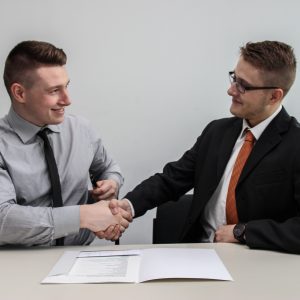Executive Leadership Series: How Embracing an Unexpected New Opportunity Renewed An Executive’s Drive to Succeed
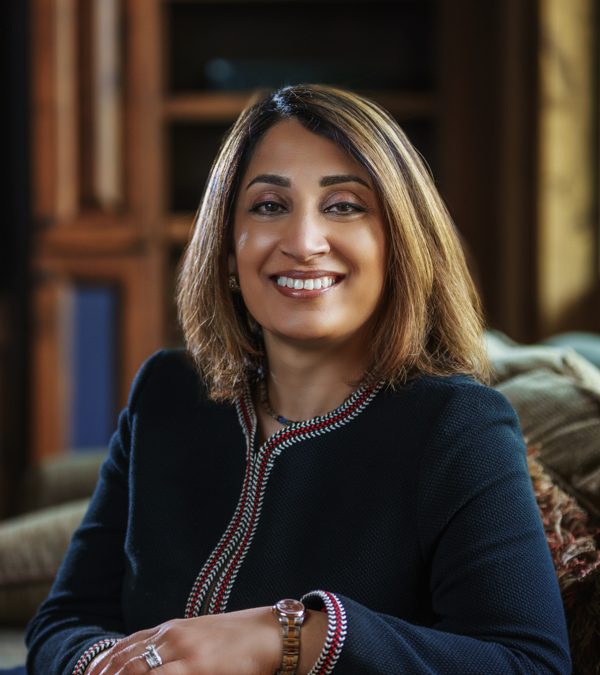
Senior Vice President and Global Head
BioLife Plasma Services, Takeda
For Hema Tallman, leading BioLife Plasma Services, part of global biopharmaceutical company Takeda, has reinvigorated her passion to succeed. Ms. Tallman spent most of her career in the retail pharmacy industry before moving to one of the most innovative plasma donation networks in the world. With more than 240 facilities in the United States and Europe, BioLife Plasma is dedicated to the collection of plasma—the straw-colored liquid portion of the blood that contains proteins—used to develop life-saving therapies for people who live with rare and complex chronic diseases.
In an interview with Ashton Tweed, Ms. Tallman discusses how growing up in South Africa shaped her career, why she first hesitated to join her current company and how she expanded the business exponentially during the COVID-19 pandemic.
Ashton Tweed: What initially drew you to the pharmacy industry?
Hema Tallman: My father is a pharmacist in our very rural racially segregated community in South Africa. He was the pioneering pharmacist of that community under some pretty difficult times. I grew up in the business and gained an understanding of health care and the profession. Our home was above the pharmacy in a small congested mining town. So I came home after school and went upstairs to eat my food and change clothes and then went back down and worked.
My father made a strong impression on me and my life, and was very encouraging that I contemplate this field. So my interest came from family pride and from an early understanding of health care and patient needs.
AT: What brought you to the United States?
HT: The United States for me was an escape because I was born, raised and schooled in a closed, oppressive environment that was mandated by the government during the years of apartheid. I didn’t have the opportunity to experience being around other races. I didn’t have the opportunity to work anywhere I wanted, marry anybody I wanted or go to any school I wanted. Around age 14 I first realized that I was somewhat captive to the situation. I’d never seen America. I just knew it as a place of glory that I saw on the television at home and heard others speak about.
So when I turned 20, I applied for a job in the United States. I was able to come practice as a pharmacist because the U.S. had a massive shortage of pharmacists and the American government was willing to grant visas to people with that experience. I took the job in 1992 and I blindly got on a plane and shipped my belongings to America.
AT: Over the next two decades you built an impressive career in the pharmacy industry. What drove you to succeed?
HT: My sole focus was establishing a life in another country where there was freedom, dignity, the right to choose and opportunity to reach your highest potential. I was focused on growing a career without constraint to see how limitless the possibilities were in the only field I knew and that didn’t allow me to think about much else for 20 years. I was also raising three children and then three stepchildren with my husband.
AT: BioLife Plasma presented a very different opportunity. Was taking it an easy decision?
HT: No, the notion of doing something completely different was quite ludicrous and the notion of a pharmacist doing non-pharmaceutical work made no sense to me either. I lived in a nice Los Angeles suburb where I raised my children. My friends were primarily other immigrants, many of them just like me. When the children were older I realized I felt bored with what I was doing, but [moving on] felt wrong considering all the good I had gratefully experienced.
Then Robert [Robert Ruth, Ashton Tweed’s Vice President and Managing Director] called me with the opportunity to join BioLife Plasma at Takeda Pharmaceuticals. I said, “You must be calling the wrong person—I’m a pharmacist.” Robert said, “No, we’re looking for exactly you.” The company was specifically looking to bring in a health retailer who would be able to transform their plasma business that was operating like a manufacturing business into something that was much more differentiated and consumer friendly.
Even though I pursued the opportunity and immediately started learning about plasma donation and plasma-derived therapies, I still remained confused. I grew up believing you can only do what you’re permitted to do and what you had studied to do. I had never been encouraged to believe that you could do anything. But the more I learned about BioLife Plasma, the more excited I got because I could see the connections and the possibilities. I also knew this was an opportunity for me to run a company someday, which at the time was a distant dream but one I felt the confidence and determination inside of me to pursue.
AT: How did you learn the business?
HT: The first year, I was faced with very tenured leaders who cut me no slack because I was a retailer who knew nothing about the business. I remember being frustrated and feeling like I would need another decade to win everyone over and get credibility. So I decided credibility would be earned through knowledge because they were all very, very knowledgeable. For six or seven months, I took home a formulary of regulations every night and studied them for two to three hours. I coupled that with visiting 60 plasma donation locations that year and I learned everything I could. I did that while managing BioLife Plasma’s U.S. operations. My credibility was slowly built in this very niched business and I experienced many moments where people looked to me for answers.
AT: You’ve been in your current position as Global Head of BioLife Plasma for 2.5 years. What has been your biggest challenge so far?
HT: The COVID-19 pandemic. I was promoted nine months into the pandemic. I had to deal with the challenges of a pandemic in a business that went from being very steady and predictable to complete volatility. I was trying to manage a workforce of 10,000 people with masks and temperature testing, and plasma donors that were scared to come in. I had to address the severely diminished population who would consider donating plasma, coupled with all the different health regulations of each state in which we were located. And the number of patients that needed their therapies didn’t go down during the pandemic.
AT: Is there a decision you’ve made that you’re especially proud of?
HT: I was particularly proud of my decision to expand the BioLife business 2.5 times to reach more patients during the pandemic. I had to open a new location every 10 days for two years and we will continue to do that until the end of this year. The pandemic didn’t stop us. In fact, it was an inspiration to become more innovative and efficient, which ultimately led to transforming our business. I take great pride in that because it’s a sure way of not letting patients down while remaining true to our values to uphold trust and our reputation in the industry and within the communities we serve.
AT: That sounds very intense.
HT: I honestly believe the pandemic was the biggest challenge I’ve ever had and will have even 10 years from now. The first sane month I had was January of 2023.
AT: Communication is such an important skill for leaders. How did you develop as a communicator?
HT: I think the desire and the joy of connecting with people and the energy you derive from it is something you’re born with. Relationships with people are my fuel because the more people I have a connection with the more energy I draw.
My leadership style is highly relational and communication is the connector of relationships. My mother was the connector of the whole community we lived in. So part of it, I think, is me emulating what I believe to be success—the go-to, the person that people come to for guidance. I like to see people grow either in their careers or as humans. To me, it’s the way I measure my effectiveness as a leader. I think I’ve elevated more people and their capabilities in our organization in the last two years than in my whole career. This goes to show how much more one can do when one is fueled.
Hema Tallman previously served as Head of U.S. Operations at BioLife Plasma; Vice President of Operations and Pharmacy Division Leader at Rite Aid; and Vice President of Strategic Procurement and Director of Pharmacy Technology and Process Design at Albertson Companies. She earned a certificate at the Wharton Business School at the University of Pennsylvania and a bachelor’s degree in Pharmacy from Rhodes University in Grahamstown, South Africa. Ms. Tallman divides her time between Chicago, Illinois, and her home in Boise, Idaho, where she lives with her family and enjoys hiking, gardening and cooking.
###


